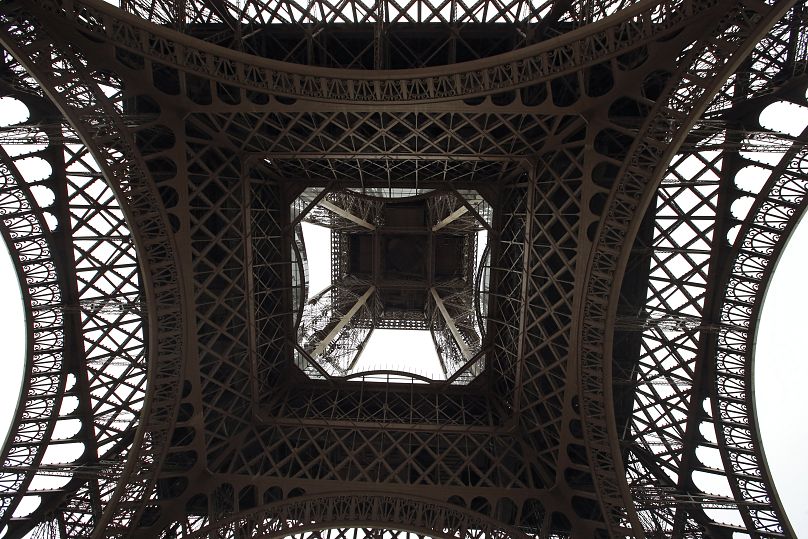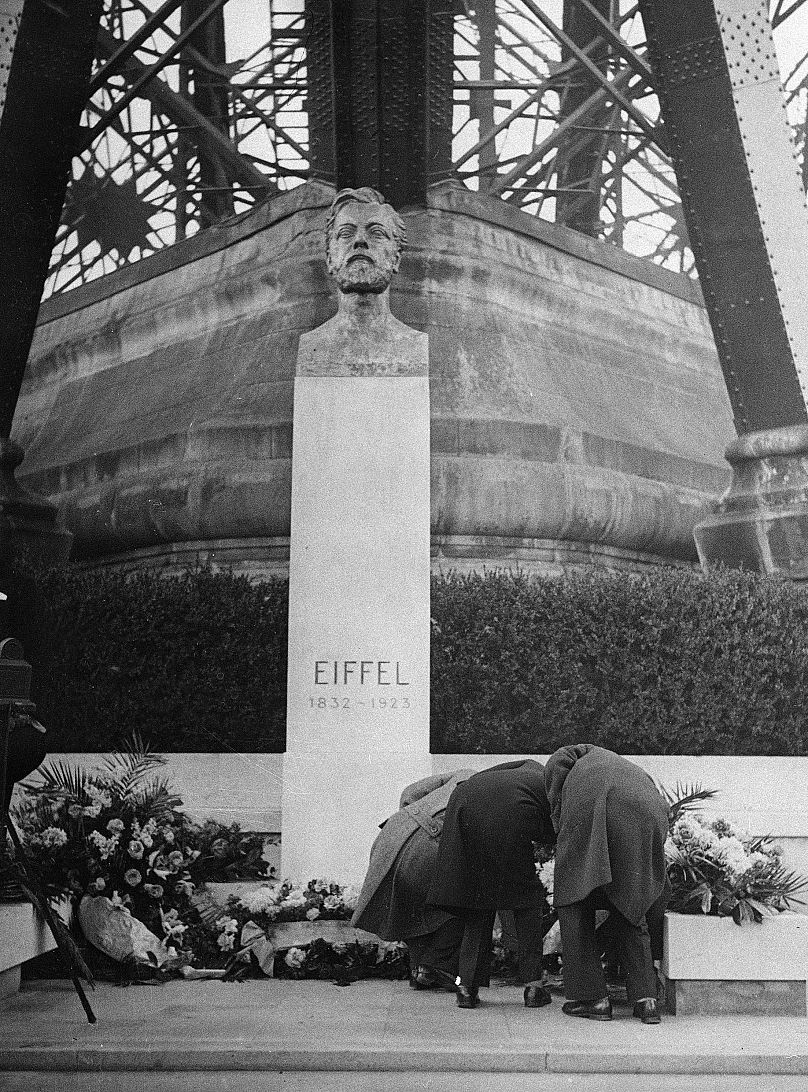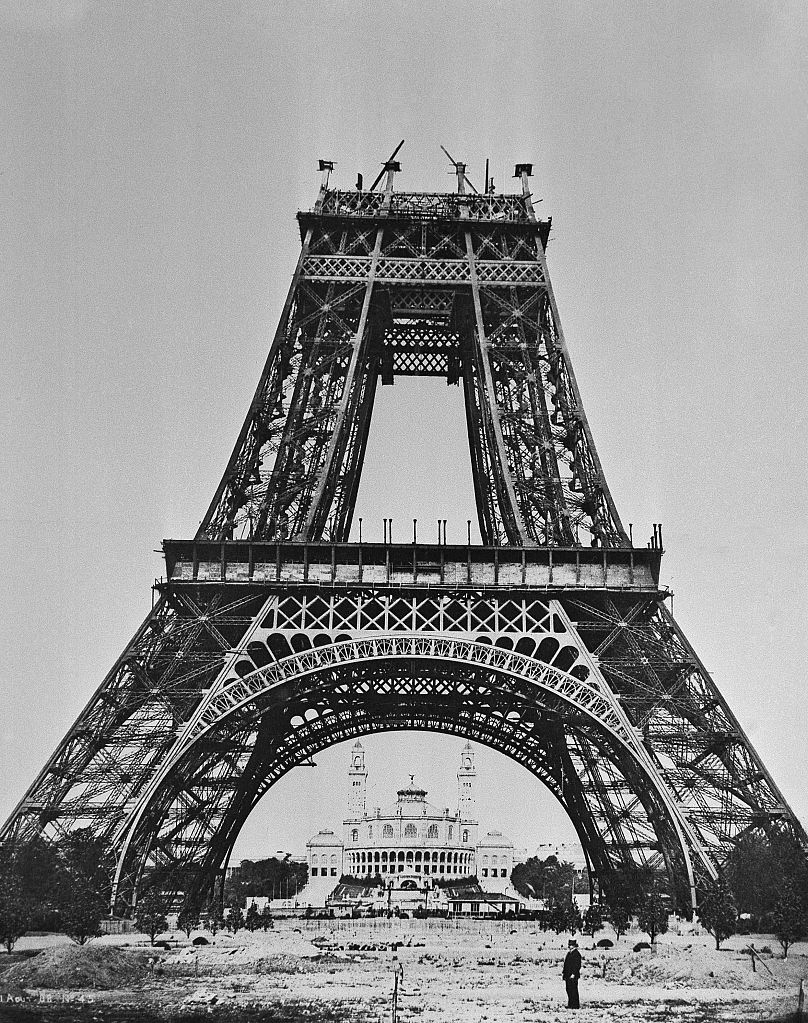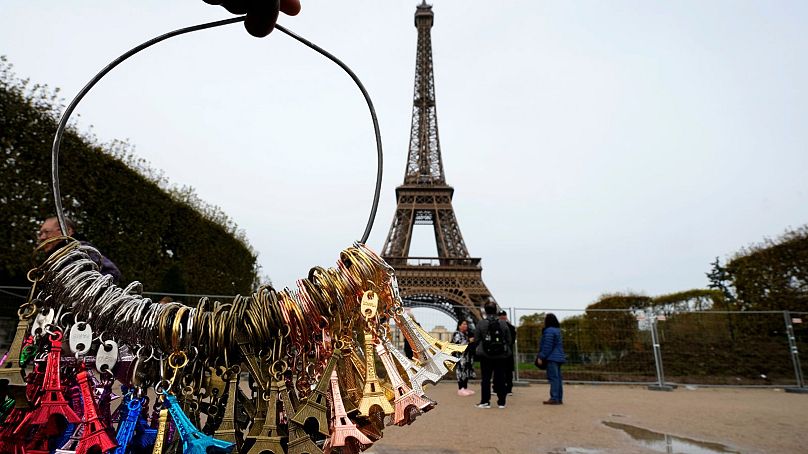To mark the centenary of Gustave Eiffel's death, here are 10 facts about La Dame de Fer you may not know.
Precisely one hundred years ago, Gustave Eiffel died at the age of 91.
The French civil engineer made his name with various bridges for the French railway network, contributed to building the Statue of Liberty and made contributions to the fields of meteorology and aerodynamics after his retirement from engineering.
However, he is best known for the world-famous tower that bears his name, a structure inseparable from the city of Paris and one of the world's most recognizable landmarks. Designed as the centrepiece of the 1889 World's Fair, the Tower was meant to commemorate the centennial of the French Revolution and to show off France's modern industrial prowess on a world stage.
To mark the 100 years since his death, Euronews Culture share 10 lesser-known facts about the Eiffel Tower - or la Tour Eiffel, or even La Dame de Fer – so you can show off the next time you’re in Paris.
It wasn’t designed by Eiffel
Contrary to popular belief, the Eiffel Tower was not designed by the man whose name it bears. It was actually Maurice Koechlin and Emile Nouguier - two engineers who worked for his company - who designed the structure. They also commissioned a French architect, Stephen Sauvestre, to help them with the tower’s appearance, as the public weren’t best pleased with the utilitarian nature of the structure.
Speedy construction
The construction of the Eiffel Tower began on 26 January 1887, and the total construction took two years, two months and five days to complete. At 330m tall, it was the tallest man-made structure on Earth when it was completed. It took until the finalization of the Chrysler Building in New York in 1930 for the tower to lose its status.
The French weren’t fans
On Valentine's Day in 1887, the Le Temps newspaper included the vehement opposition of over 300 Parisian artists, writers and political thinkers to the Eiffel Tower.
“To comprehend what we are arguing one only needs to imagine for a moment a tower of ridiculous vertiginous height dominating Paris, just like a gigantic black factory chimney, its barbarous mass overwhelming and humiliating all our monuments and belittling our works of architecture, which will just disappear before this stupefying folly,” the protest letter read.
Eiffel responded in the same newspaper, arguing that he as an engineer did care about adding beauty to the city.
It was supposed to be demolished
The Eiffel Tower was built to flaunt France’s industrial prowess at the 1889 World Fair. But when its permit expired in 1909, it was ready to be dismantled.
In order to keep this landmark a part of living history, a radio antenna was placed at the very top. Deemed too important to destroy by city officials, the now-radio-transmission tower was saved from demolition.
It’s also worth noting that in 1944, Hitler ordered that if Paris could not be held from the Allied liberation, it should be demolished – and that the Eiffel Tower should fall at all costs.
The tower can only be painted by hand
The Eiffel Tower is mostly painted by hand, and is repainted with a thick layer of protective paint every seven years by 50 painters, to prevent the iron exteriors from rusting. In case you were wondering, it takes roughly 60 tonnes of paint to get the job done.
And while we’re on makeovers, La Dame de Fer is getting a golden upgrade for the 2024 Paris Olympics. The repainting job will be one of the tower’s most extensive revamps in 130 years.
Its height changes
The Eiffel Tower’s height changes with the seasons, meaning that if you’re visiting in summer, the tower is taller. This is due to the iron structure expanding up to 7 inches when temperatures rise. Conversely, in winter, the cold causes the tower to shrink up to 6 inches, due to the iron contracting. And even though the tower was built to last, it can sway during storms.
There are 72 names engraved at the base
There are 72 names engraved on the base of the Eiffel Tower. These engravings pay homage to the mathematicians and scientists who are attributed to the tower's successful construction. They were previously covered up and then restored with golden lettering to honour those like Foucault and Dumas who made the tower possible.
A lot of climbing
The Eiffel Tower comprises three sections. Section 1 is the observation area and the restaurant Madame Brasserie; section 2 has the Michelin-starred restaurant, Le Jules Verne, and another observation deck; section 3 is the top floor with the Bar à Champagne. All in all, 1,665 steps to get to the bubbles.
It has a secret apartment
During construction, Eiffel secretly included a private apartment within his tower. It is where he hosted famous guests like Thomas Edison. The space has since been transformed into a recreation of Eiffel's office, complete with wax figures of the main man himself, his daughter, and Edison.
There is a Mrs. Eiffel Tower
American competitive archer and advocate for object sexuality (those who develop relationships and sexual attraction for inanimate objects), Erika Aya “married” the Tower in 2007. She encountered the tower for the first time in 2004 and it was love at first beam. So, before you start getting any ideas, la Tour Eiffel is off the market.















